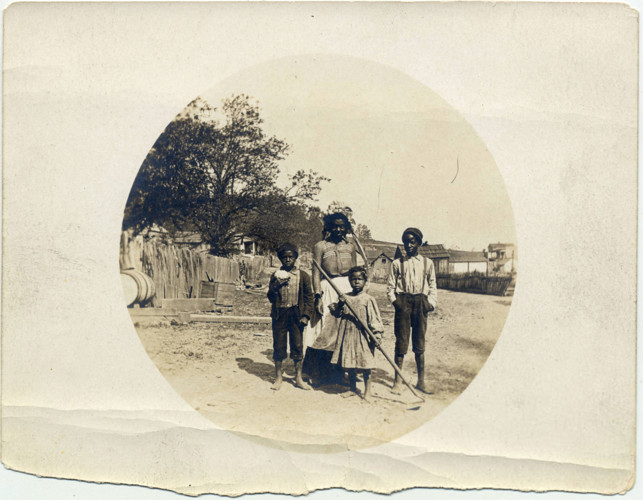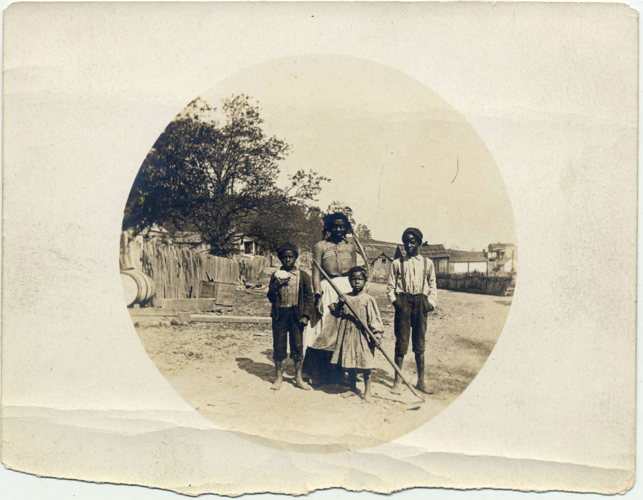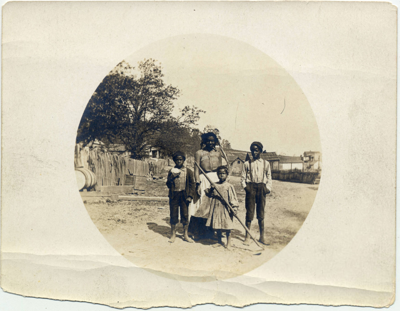
Also a part of this week's cover package, see Erica Ciccarone's piece on Black farmers who are feeding their neighbors and connecting with their ancestors.
Just after Appamatox, Whitelaw Reid — a reporter who’d seen the horrors of the Civil War at Shiloh and Gettysburg — interviewed an elderly man nearing the twilight of his life but finally free from slavery’s shackles.
“What’s the use of being free,” the man told Reid, “if you don’t own land enough to be buried in? Might just as well stay a slave all yo’ days.”
Because of Gen. William Tecumseh Sherman’s Special Field Orders No. 15 — the source of the famous “40 acres and a mule” promise — many newly freed Black Americans believed farmland seized by the Union Army would be redistributed to them. In some cases — notably, in the Sea Islands off the Georgia coast — it was. But efforts by abolitionists, lawmakers and military leaders for a widespread plan met harsh (and frankly predictable) resistance from returning former Confederates. A plan to offer homesteads to the formerly enslaved on federal land in Mississippi, Alabama, Arkansas and Florida was vetoed by President Andrew Johnson.
The land grants were not forthcoming, and the newly freed would find it difficult to join the handful of Black landowners — those born free and those manumitted prior to the Emancipation Proclamation — who already had plots of their own. That group included Sherrod Bryant, who is buried in Donelson, and who was likely the wealthiest Black man in Tennessee before his death in 1854. Born in North Carolina in 1781, Bryant came to Middle Tennessee in 1810 and amassed a huge farm. He owned nearly 700 acres — more than Andrew Jackson — including what is now Long Hunter State Park and parcels in town, one of which is the site of the Schermerhorn Symphony Center. He carried letters of introduction that urged he be treated the same as a white man, and he himself owned more than 20 enslaved people to work his hog operation.
The constitutional end-around that sent Rutherford Hayes to the Oval Office more or less ended Reconstruction, reverting control of state governments to the states themselves, In the South, that meant plenty of former slaveholders and those sympathetic to them held power once again. Many state and local governments passed laws hindering Black land ownership by, for example, barring the purchase of land outside city limits by the formerly enslaved — which, obviously, would limit the number of Black-owned farms, crushing the hope of Reid’s interlocutor and those like him.
Academics have noted that in the Upper South — including Tennessee — would-be Black farmers found the going a little easier than did their compatriots deeper in the former Confederacy, with white landowners seemingly more willing to sell if the price was right. Studies point to a multiplicity of potential reasons. For starters, many parts of the Upper South (East Tennessee, for example) did not have an extensive history of slaveholding. Plus, the economies were more diversified than in the Deep South, meaning there were more ways to earn a living, and a white farmer could sell out and move to town instead of working his land. There were more battles fought in the Upper South, resulting in farms either ravaged by war or, perhaps, holding painful memories. Racial prejudices notwithstanding, an exhausted veteran or war widow might just want out.
There were private efforts to organize what we’d call a farming collective for the formerly enslaved as well. Nashville native Benjamin “Pap” Singleton — born into slavery and notable for his frequent escapes — came back to Tennessee from Canada after the war and planned to buy up vast tracts of farmland in his home state for the recently emancipated. And while the evidence shows turning over smallholdings to Black farmers was palatable, Singleton’s plan for a huge operation was a bridge too far for white landowners. Still, Black farm ownership grew essentially at the same pace as the overall Black population in rural parts of the Upper South, and land ownership by Black farmers in rural areas was three times more common than it was in the Deep South.
Times were tough all over, so sharecropping, tenant farming and lease arrangements were common not just between Black farmers and wealthy white planters, but with small- and medium-size operations as well. Without a doubt, many of these agreements were exploitive with the benefit inuring to the wealthy and white, but sometimes the more benign arrangements often lasted generations. (A personal note: My great-grandmother leased her tobacco base to, among others, Black farmers on her small Trousdale County farm for decades; no one ever seemed to wonder how it came to be that many of these Black farmers and my Great Nanny shared a surname.)
Evidence of Black farmers owning their land in their own right during the 19th and early 20th centuries is still evident today. Tennessee’s Century Farm program, which recognizes farms that have been owned and operated for agricultural purposes by the same family for at least 100 years, includes nine farms founded by Black farmers between 1871 and 1906. Six of those nine are in Middle Tennessee. While that seems significant, it’s noteworthy that the state recognizes 1,917 Century Farms — so those started by Black farmers represent less than one-half of 1 percent of the total.
In 1910, Black farming peaked in Tennessee, with nearly 11,000 Black farmers, 28 percent of Tennessee’s total, at a time when the state’s population was 21 percent Black.
But fueled by violent racial animus, lynching, Jim Crowism, underhanded land dealing and intimidation — coupled with better job prospects in the industrializing North — the Great Migration began with the onset of World War I and continued for the next 65 years. In 1980, Tennessee’s Black population hit its nadir at 15.8 percent, and there were fewer than 2,000 Black farmers. Today, one in six Tennesseans is Black; only one of every 100 Tennessee farmers is — a total of 1,372, according to the latest United States Department of Agriculture figures.
The Great Migration, however, tells only part of the story in the decline of Black farming. There is also the noxious history of discrimination by the USDA — one that critics say hasn’t been honestly addressed, despite the Obama administration and then-Secretary of Agriculture Tom Vilsack insisting the department had turned a page.
But the evidence for this is sketchy. Though the USDA said it was doing a better job addressing discrimination complaints, decades of poor record-keeping make this impossible to verify. The Obama-era USDA foreclosed on Black farmers at a rate six times higher than their white counterparts. Records indicate that USDA officials continued to engage in underreporting acreage and yields from Black farmers on loan applications, a subterfuge that results in lower payouts for Black farmers and one that has been persistent for decades.
Even the claims of a renaissance in Black farming is misleading. Vilsack and his underlings were fond of citing the apparent 9 percent increase in Black farmers nationwide shown in the 2012 Census of Agriculture, but subsequent reviews indicate that the number of Black farmers decreased, and the growth shown by the CoA was simply the result of better data-gathering methods.
The USDA settled a class-action lawsuit with Black farmers in 1999. While the nation’s agriculture laws and programs were color-blind, the department relied on county-level boards to implement those programs, and even in counties with overwhelming Black-majority populations, the boards were often lily-white. On average, it took three times as long for the USDA to process loan applications from Black farmers than it did white farmers, and the department’s Office of Civil Rights essentially did nothing for decades.
The settlement is the largest civil rights settlement in American history, with more than $2 billion paid out to Black farmers. The payouts, though, being aimed at existing farmers (the settlement was specifically limited to those discriminated against between 1981 and 1996), did little to attract new Black farmers, who face the same difficulties as anyone else starting out in this tough line of work. An expanding market for locally grown produce, a focus in restaurants on farmer-friendly purchasing and growing concerns about corporate farming is making smaller-scale farming more profitable. But those profits are only available to those with enough capital on the front end to get started, and those with the steely determination to face down the obstacles that farmers have faced for millennia.
Farming benefits everyone, but farming isn’t for everyone.
The 2017 Census of Agriculture reported the average age of a Black farmer in Tennessee is 62.2 years old, more than four years older than the average farmer in general. There were just 40 Black farmers under the age of 35 in Tennessee in 2017. This points to, ultimately, the extinction of the Black farmer, an outcome Black agricultural leaders have warned about for more than two decades.
In other states, Black agriculturalists and activists are working to fend off the demise. Some follow Pap Singleton’s plan of acquiring land for young Black farmers. New York’s Soul Fire Farm has earned national attention through its mix of land acquisition, education and a focus on food sovereignty for communities of color, all wrapped in the language and practice of the Black Liberation movement.
There is no moonshot government-spending program or well-meaning activist undertaking that can combat the simple fact that for rural young people of all races, there are more opportunities off the farm than back on it. Still, there are those determined to keep the rich legacy of Black farming alive, be it through keeping those Century Farms vibrant or through turning over the soil for the first time.







